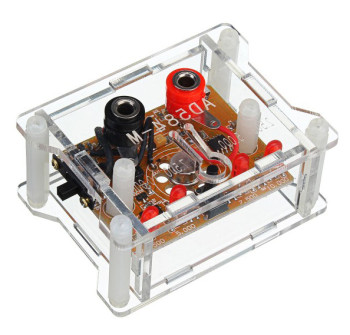All Multimeters Are Not Created Equal
April 18, 2019
on
on
 You have a thirty year old multimeter, another one that’s 10 years old and a third one that you just bought. Their prices are wildly different and you can’t compare them that way. Happily their measurements are pretty close, but you still want to know which one is absolutely right. A simple voltage reference source should let you select the best one.
You have a thirty year old multimeter, another one that’s 10 years old and a third one that you just bought. Their prices are wildly different and you can’t compare them that way. Happily their measurements are pretty close, but you still want to know which one is absolutely right. A simple voltage reference source should let you select the best one.
To be sure, to be sure
On his test bench, the smart electronics technician keeps at least two multimeters. In case of doubt on the origin of a fault, a double check made with a second multimeter gives you a good starting point: the meter itself is not in question. It’s not rare to have to make simultaneous measurements at two or more points in a circuit. Another reason to have a second multimeter. A relative comparison is usually very informative, but sometimes, to know exactly what to believe, you also need a calibrated reference, with the aid of which you can be sure of the accuracy of the voltages displayed by each of the devices used. For that you need a calibrated voltage reference source like the AD584. Mounted with a couple of peripheral components on a small printed circuit board, this 8-pin integrated circuit offers its services for next to nothing to anyone who wants to know about the differences between his multimeters.Don’t forget about the test leads
Watch out for measuring artefacts! To be rigorous, the same test leads must be used (all are not equal before the god of Ohm, especially test probes and crocodile clips!). Also, avoid making the mistake of connecting more than two devices on the same voltage source. The video below is not a perfect measurement protocol, but it well illustrates a problem that faces any electronics tech during his day and shows solutions and ways of working which are worthy of note.Read full article
Hide full article


Discussion (7 comments)